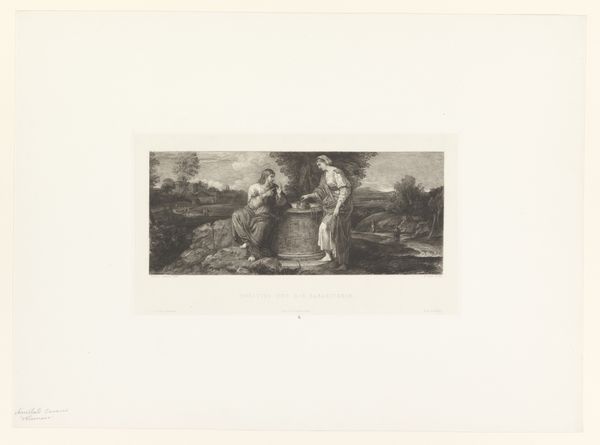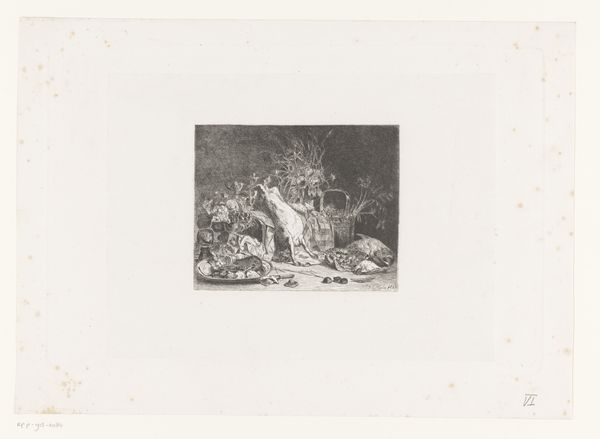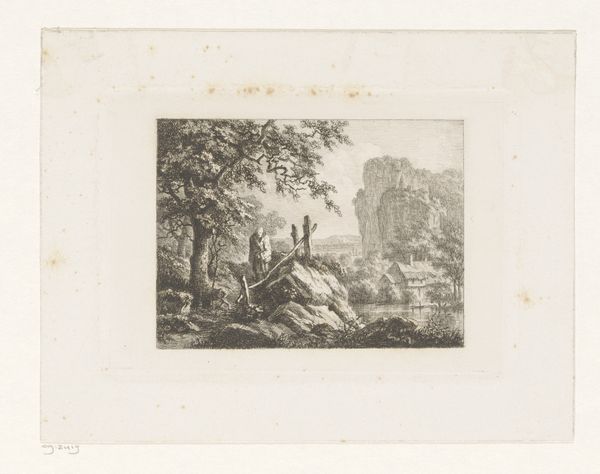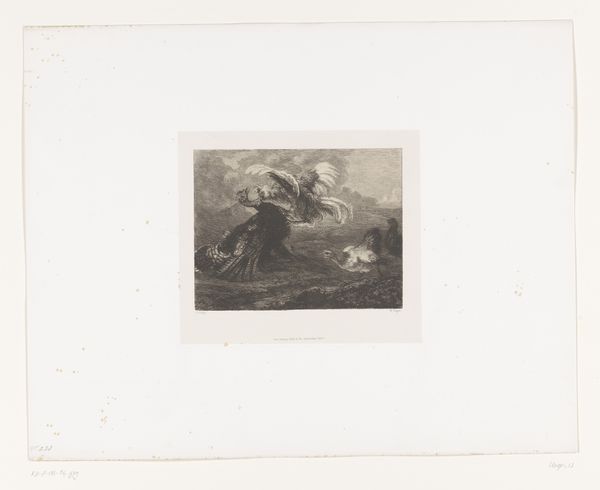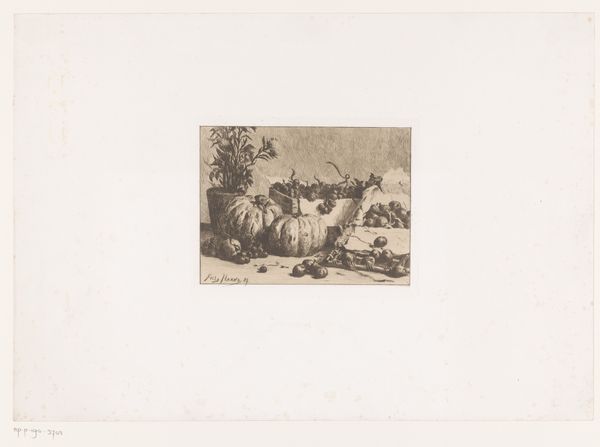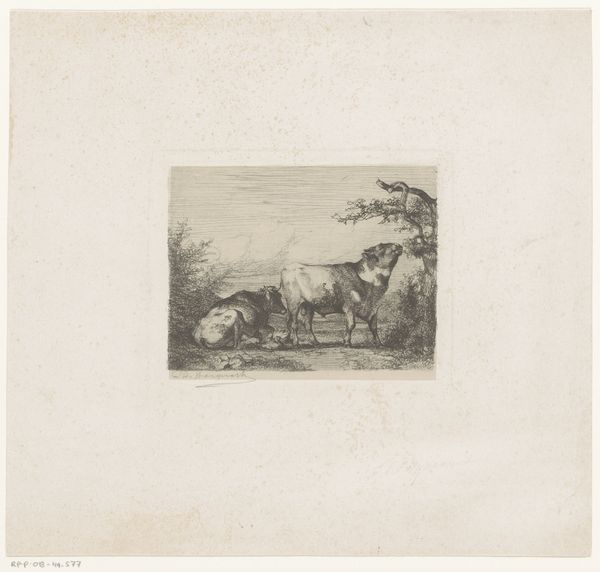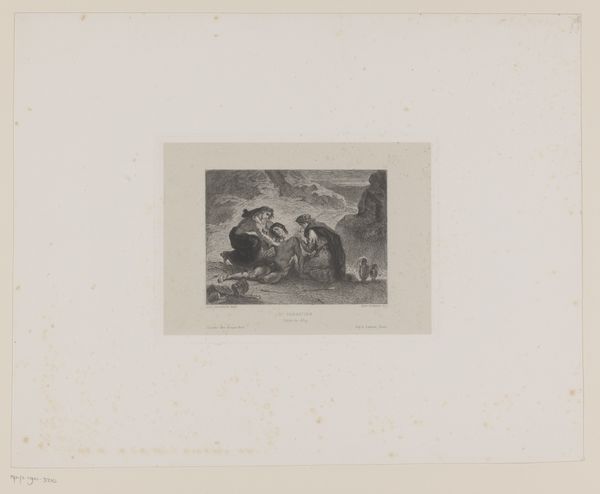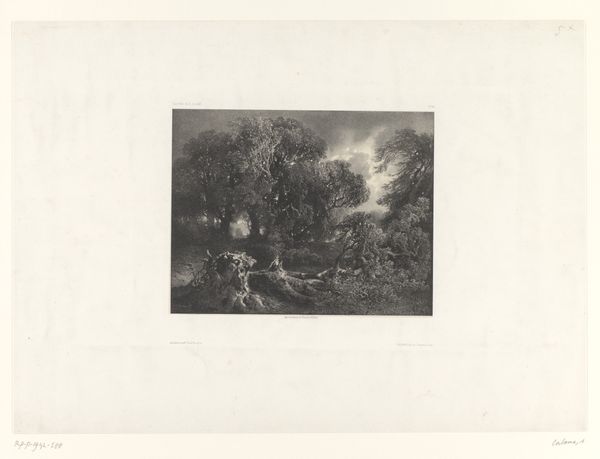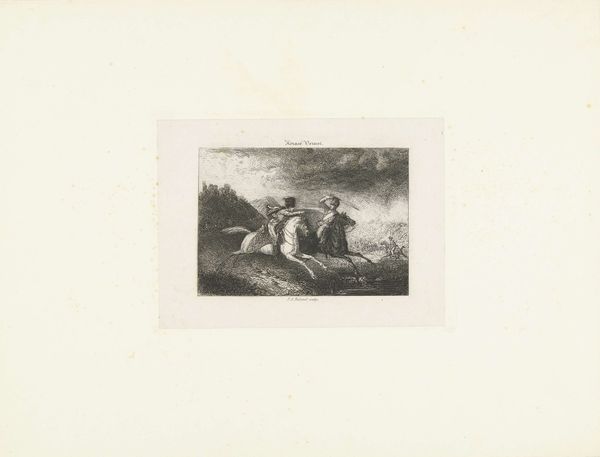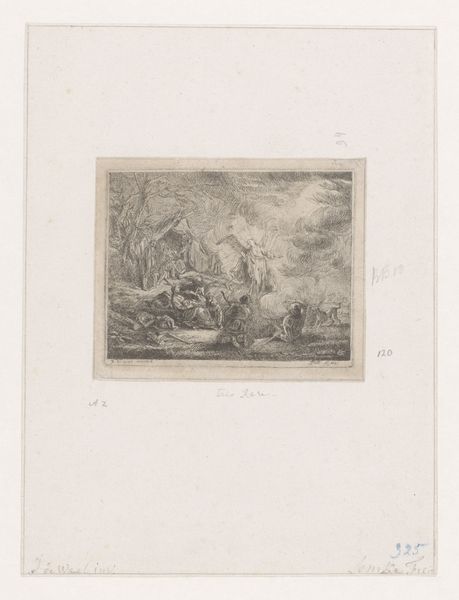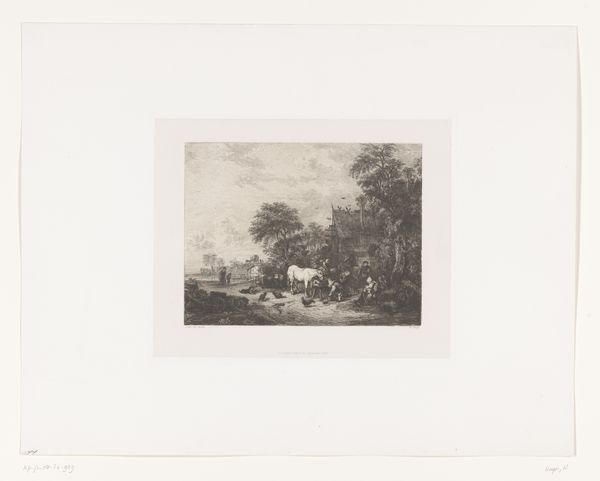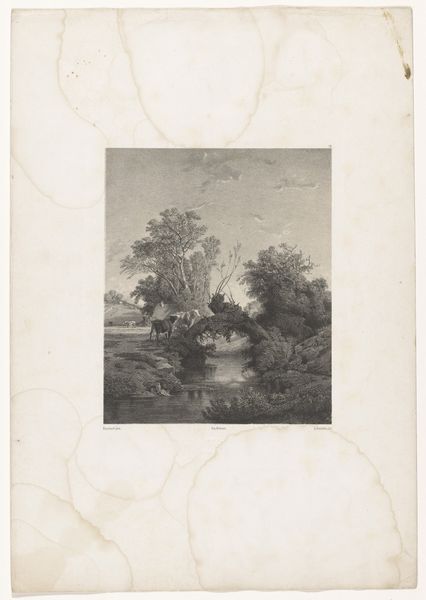
Dimensions: height 144 mm, width 201 mm
Copyright: Rijks Museum: Open Domain
"Landschap met rotsblokken," or "Landscape with Boulders," was made by Auguste Numans. Here the artist uses etching to create a scene that is seemingly both wild and serene. Etching involves coating a metal plate with a waxy, acid-resistant substance. The artist then scratches through this coating to expose the metal, which is then bitten by acid to create recessed lines. Ink is applied to the plate, filling these lines, and the surface is wiped clean. The image is transferred to paper under high pressure, creating a print. The material qualities of etching—the fineness of line, the potential for tonal variation, and the capacity for mass production—imbue the work with a sense of detail and reproducibility. The use of etching meant that Numans could distribute images widely, feeding a growing market for landscape imagery in an increasingly industrialized society. The labor-intensive process also reflects the economic realities of art production, where skilled craftsmanship meets the demands of the market. Considering the materials, making, and context helps us understand how this landscape reflects its time.
Comments
No comments
Be the first to comment and join the conversation on the ultimate creative platform.

